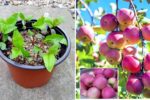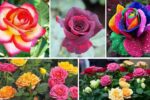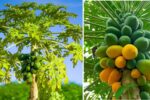Join on WhatsApp
Get the latest updates directly on WhatsApp – motivation, news & more!
Bees are some of the most vital pollinators in the world, playing a crucial role in the health of ecosystems and food production. Without bees, many plants including fruits, vegetables, and flowers would struggle to reproduce. Unfortunately, bee populations are declining due to habitat loss, pesticide use, and climate change. By growing bee-friendly plants in your garden, you can support these essential pollinators, encourage biodiversity, and foster a healthier environment.
Creating a bee-friendly garden not only benefits the bees but also improves your garden’s productivity and beauty. In this guide, we’ll explore some of the best plants to grow that will attract and sustain bees throughout the growing season.
Native Wildflowers: Nature’s Pollinator Magnets
Native wildflowers are excellent choices for supporting local bee populations. These plants have evolved alongside native bees and other pollinators, providing the nectar and pollen they rely on. Wildflowers also require less maintenance once established, making them an easy and eco-friendly option.
Some top native wildflowers to consider include coneflowers, black-eyed Susans, and blazing stars. These plants bloom at different times during the season, ensuring a continuous food source for bees. Their varied colors and shapes also add visual interest to your garden.
Lavender: A Fragrant Favorite for Bees
Lavender is not only loved by gardeners for its beautiful scent and striking purple flowers, but it’s also a favorite among many bee species. Its flowers produce abundant nectar, attracting bees from early summer to late fall.
This hardy perennial thrives in sunny spots with well-drained soil. Regular pruning after flowering encourages bushier growth and more blooms. Planting lavender near pathways or seating areas can also provide a delightful sensory experience while supporting pollinators.
Sunflowers: Bold Blooms with Big Benefits
Sunflowers are easy to grow and provide a spectacular display of large, bright flowers. Beyond their aesthetic appeal, they offer plentiful pollen and nectar for bees. Their height and structure also provide shelter for other beneficial insects.
Sunflowers attract a wide variety of pollinators and can be grown from seed in most climates. They prefer full sun and well-drained soil and can be planted in large groups to create a powerful visual and ecological impact.
Bee Balm: A Magnet for Pollinators
Bee balm, also known as Monarda, is named for its ability to attract bees, hummingbirds, and butterflies. Its vibrant red, pink, or purple blooms produce a rich nectar that supports pollinator energy needs.
This perennial grows well in full sun to partial shade and prefers moist, well-drained soil. Bee balm’s long blooming season makes it a valuable addition to any garden aimed at supporting pollinators. Its aromatic leaves can also be used in teas and cooking.
Borage: A Hardy Herb with Blue Star-Shaped Flowers
Borage is an herb that is beloved by bees for its continuous nectar supply. The plant’s striking blue, star-shaped flowers bloom profusely throughout summer, providing food for pollinators even during hotter months when other blooms fade.
Borage is easy to grow from seed and tolerates poor soil conditions. It also has culinary and medicinal uses, making it a multifunctional addition to your garden. Plus, it naturally attracts beneficial insects that help control garden pests.
Clover: Groundcover and Pollinator Powerhouse
Clover is often overlooked but is incredibly beneficial for bees. As a low-growing groundcover, it helps fix nitrogen in the soil, improving fertility, and its small flowers provide a rich nectar source for pollinators.
Planting clover in lawns or between garden rows creates habitat and foraging opportunities for bees. White clover, in particular, is widely used for this purpose. It’s drought-resistant and can help reduce the need for chemical fertilizers.
Wild Thyme: Aromatic and Attractive to Bees
Wild thyme is a low-growing herb that produces small but nectar-rich flowers, attracting bees especially in late spring and early summer. Its fragrant foliage also repels some pests, making it a beneficial companion plant.
This drought-tolerant perennial thrives in sunny, well-drained locations and is suitable for rock gardens or borders. Wild thyme’s resilience and ecological benefits make it an excellent choice for bee-friendly gardens.
Goldenrod: Vital Late-Season Nectar Source
Goldenrod blooms in late summer to fall when many other nectar sources diminish. Its tall stalks are covered with small yellow flowers that produce pollen and nectar vital for bees preparing for winter.
Often misunderstood as a cause of allergies, goldenrod is actually a valuable native plant that supports late-season pollinators. Plant it in groups in sunny locations to provide a vibrant splash of color and essential nourishment.
Creating a Bee-Friendly Garden Habitat
In addition to selecting the right plants, creating a welcoming habitat is key to supporting bees. Avoid using pesticides and herbicides that can harm pollinators. Provide a shallow water source, like a birdbath with stones for landing, and incorporate bare patches of soil or wood for ground-nesting bees.
Mixing different flowering plants that bloom at various times ensures a steady food supply throughout the year. Diverse plant heights and flower shapes accommodate different bee species and their preferences.
The Benefits of Growing Bee-Friendly Plants
Planting for bees isn’t just an act of kindness to pollinators; it brings tangible rewards to gardeners as well. Healthy bee populations lead to better pollination, increasing the yield and quality of fruits, vegetables, and flowers in your garden.
Bee-friendly gardens also foster biodiversity, supporting a wide range of wildlife. The vibrant colors and scents of these plants enhance outdoor spaces, making gardening a more enjoyable experience. Ultimately, by growing bee-friendly plants, you contribute to the resilience of local ecosystems and help safeguard our environment.
Conclusion: Make Your Garden a Haven for Bees
Supporting bees through thoughtful planting is one of the simplest yet most impactful actions gardeners can take. By choosing native wildflowers, herbs, and perennials like lavender, bee balm, and goldenrod, you create a thriving environment where bees can flourish.
As you nurture your garden, you’ll notice not only the beauty of the blooms but also the buzz of busy bees a sign of a healthy, balanced ecosystem. Together, these plants and pollinators work to sustain the natural world, making your garden a vibrant haven for life.




